K-5 (Submarine No. 36)
1914–1923
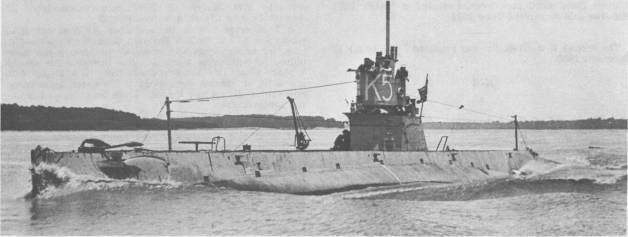
(Submarine No. 36: displacement 392 (surface), 521 (submerged); length 153'7"; beam 16'8"; draft 13'1"; speed 14 knots (surface), 10.5 knots (submerged); complement 28; armament 4 18-inch torpedo tubes; class K-1)
K-5 (Submarine No. 36) was laid down on 10 June 1912 at Quincy, Mass., by the Fore River Shipbuilding Co. under a subcontract from the Electric Boat Co., Groton, Conn.; launched on 17 March 1914; sponsored by Mrs. Warren G. [Julie] Child, the wife of Lt. Warren G. Child, an officer on duty at the shipyard; and commissioned at the Boston (Mass.) Navy Yard on 22 August, Lt. (j.g.) Holbrook Gibson in command.
K-5 received orders assigning her to the Submarine Flotilla, Atlantic Fleet, on 14 September 1914. Those orders were amended on 9 October when she received orders assigning her to the newly-organized Fourth Division, Submarine Flotilla, Atlantic Fleet. The submarine departed the Boston Navy Yard on 16 November. Initially, bound for the Torpedo Station at Newport, R.I., she arrived later that day and then departed on 19 November for the Submarine Base, New London, Conn. where she joined the Fourth Division. She cleared the base on 8 December to cruise and conduct trials. Returning to base on 10 December, she departed the following day and proceeded to the New York Navy Yard, Brooklyn, N.Y. Arriving on 11 December, she entered dry dock and underwent maintenance into 1915.
K-5 cleared the New York Navy Yard on 19 January 1915 and arrived at Charleston, S.C., on 23 January. Getting underway again on 26 January, the boat proceeded to Key West, Fla. (29 January–5 February) and Tampa, Fla. (6–7 February) in advance of reaching Pensacola, Fla. on 9 February. There she conducted training with the other boats of her class until 25 April. Departing the Gulf coast on that day, she proceeded via Key West (27 April–1 May) to the North River anchorage in the Hudson River off New York (6–18 May). She then went to sea for maneuvers en route to Newport, where she arrived on 27 May. She operated in the waters of Narragansett Bay until 20 June, when she sortied from Newport and reached the New York Navy Yard, where she docked for overhaul the following day. The submarine remained at the yard until 2 October, when she undocked and cleared for Newport. Arriving at her destination the next day, she departed on 4 October for maneuvers and training. Returning to Newport (10–31 October), she proceeded back into the New York Navy Yard. Reaching on 1 November, she remained there through the year’s end.
K-5 resumed operations underway on 27 January 1916, when she cleared the New York Navy Yard bound for a return to Southern waters. Again proceeding via Key West (1–6 February) and Tampa (7–14 February), the submarine arrived at Pensacola on 16 February to conduct training submariners with the fellow boats of the flotilla. This included diving drills, underwater maneuvers, and torpedo firing practice. With training completed, she departed Pensacola on 26 April and proceeded via Key West (28–30 April) and Hampton Roads, Va. (4–13 May) to the New York Navy Yard. Arriving on 14 May, she remained there undergoing overhaul until 3 August.
With her yard work completed, K-5 cleared for New London, where she reached on 4 August 1916. After four days conducting submerged training, she sortied on 8 August for Great Salt Pond, R.I., to conduct maneuvers with the Atlantic Fleet (8–12 August) before returning to New London for oscillator tests (12–16 August). She then continued on to Melville Station, R.I. and Newport (16-19 August) to refuel and to obtain lubricating oil. She then returned to her station at New London (19–21 August) before sortieing to conduct strategic maneuvers off Cold Spring Inlet, N.J. (22–24 August) and Block Island, R.I. (26–27 August). She then returned to Cold Spring Inlet, whence she operated for training (28 August–12 September) with the exception of her time refueling at the Philadelphia (Pa.) Navy Yard (1–3 September).
After a time in port at Philadelphia (12–16 September 1916), K-5 conducted engineering performance runs off New London (19–20 September) before conducting a series of torpedo practices in the waters of the Long Island Sound (20 September–11 October). Afterward, she returned to New London on 11 October to conduct crew training until 31 October. The boat then proceeded in to the New York Navy Yard on 1 November and underwent overhaul until clearing on 3 December. The boat transited to Hampton Roads, where she took on supplies and underwent further repairs.
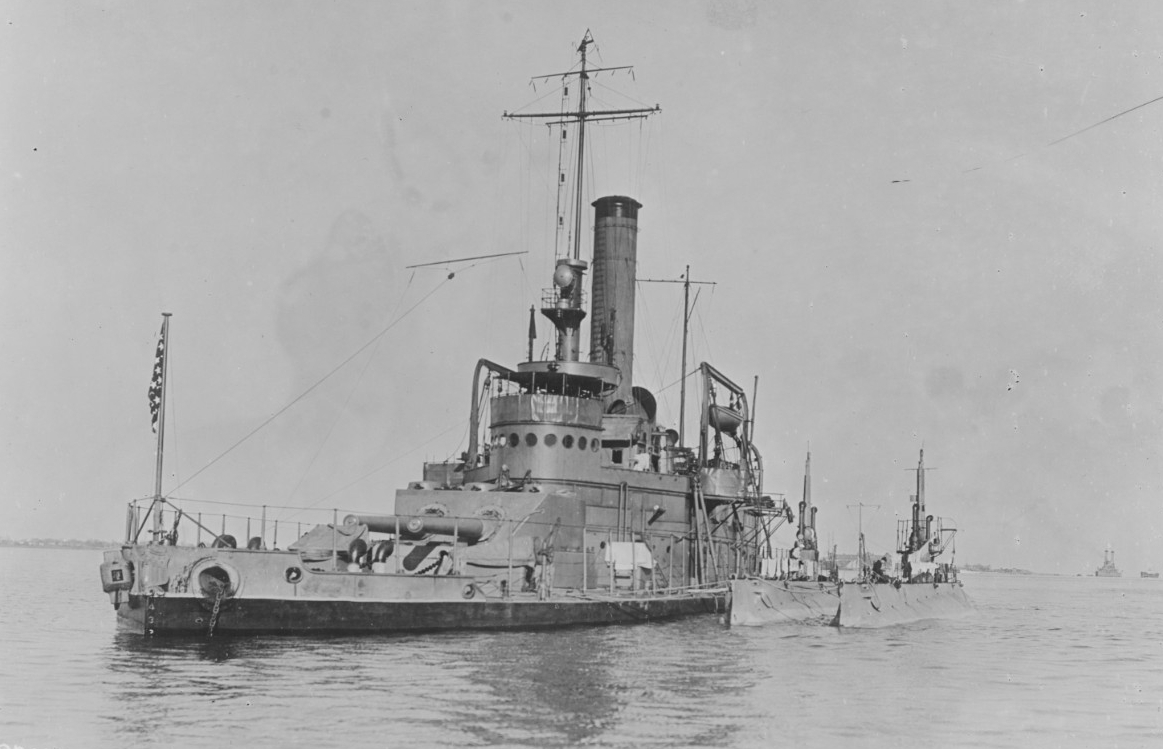
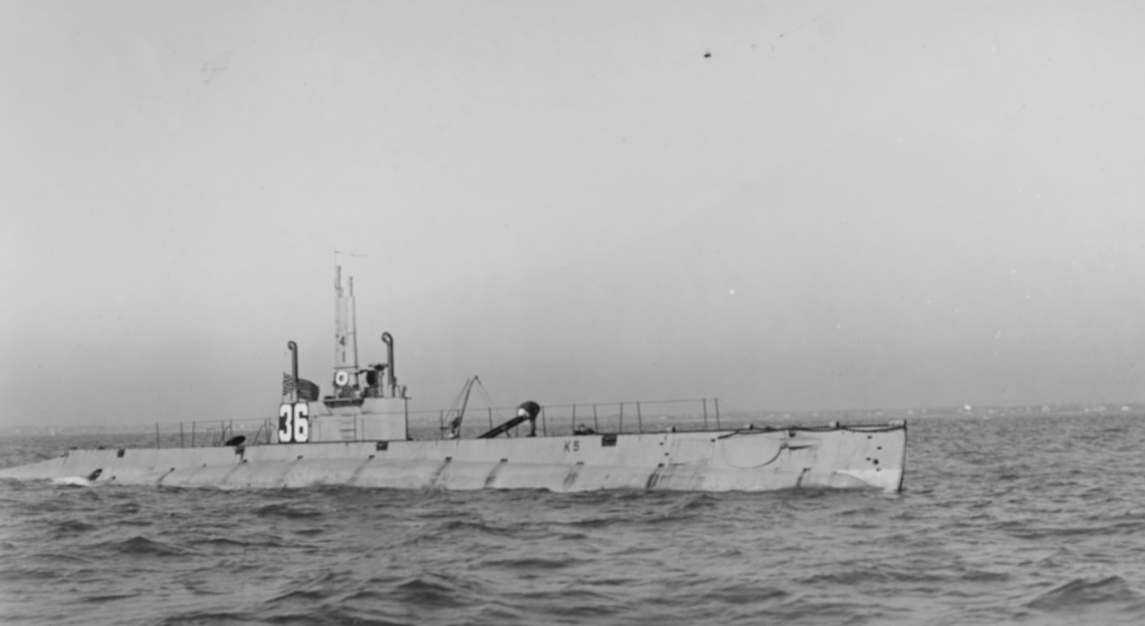
Departing on 16 December 1916, she proceeded to Charleston, where she anchored for the night, in advance of continuing on to Key West. Reaching on 22 December. The submarine remained there over the next month conducting submerged training to 22 January 1917. K-5 then shifted to Dry Tortugas, Fla (22–26 January) to conduct torpedo proving practice before cruising based from Key West (26 January–4 February). The boat then proceeded to Tampa for liberty and recruiting duty (5–11 February) prior to arriving at Pensacola on 12 February and conducting tactical training until the 17th. She then shifted to Mobile, Ala., for liberty (17–21 February) before returning to Pensacola to conduct submerged training and tactical problems with the other boats of the Submarine Force (21 February–27 March).
As K-5 conducted her training, relations between the U.S. and Imperial Germany became strained pursuant to the latter’s resumption of its unrestricted submarine warfare campaign on 1 February 1917. As a result, Atlantic Fleet assets were being consolidated along the east coast in the anticipation of the outbreak of war. The submarine made her return to Hampton Roads, via Key West (29–31 March) on 5 April. The following day, 6 April, the U.S. declared war on Germany. The submarine refueled at the Norfolk Navy Yard, Portsmouth, Va. (6–8 April) before returning to Hampton Roads. Sailing on 8 April, she set a northerly course and stood in to the New York Navy Yard (11–24 April). She then proceeded to New London (Base No. 22) to conduct crew training until 8 May, then shifted from the yard to Gravesend Bay, N.Y. with Bushnell (Submarine Tender No. 2) where they anchored overnight. Departing on 10 May, she proceeded to Philadelphia, where she entered the yard for overhaul on the 11th. This preparation for distant service continued until 7 October.
While K-5 underwent overhaul, Vice Adm. William S. Sims, Commander, U.S. Naval Forces in European Waters, in June 1917, cited British success in using submarines as submarine hunter-killers in antisubmarine warfare (ASW). The Allied submarines, with their lower profiles, could approach U-boats more stealthily than larger surface patrol vessels. On 2 July, Adm. William S. Benson, Chief of Naval Operations, ordered the twelve most suitable submarines on the Atlantic coast be prepared for duty in European waters. K-2 was selected for this duty and was fitted out for distant service. K-5 completed her pre-deployment refit and cleared the Philadelphia Navy Yard on 7 October 1917. Proceeding to the Submarine Base at New London. Arriving on 8 October 1917, she continued to prepare for service in the “war zone”.
K-5 departed New London, proceeding down the Thames River, on 12 October 1917, in company with Bushnell, K-1 (Submarine No. 32), K-2 (Submarine No. 33), and K-6 (Submarine No. 37). Passing through the Cape Cod Canal and the vessels rendezvoused with the protected cruiser Chicago (flagship Submarine Force, Atlantic Fleet) at Provincetown, Mass. The force stopped at Halifax, Nova Scotia (15–16 October) en route to the Azores, where it arrived at Ponta Delgada (Base No. 13) on the 27th. K-5 received orders to operate from Ponta Delgada and conduct patrol cruises off the Azores in conjunction with her sister K-boats and the yet to arrive E-1 (Submarine No. 24). These boats were designated the Fourth Division, Submarine Flotilla, Atlantic Fleet, while the L-boats based in Ireland were designated the Fifth Division.
K-5 sortied from Ponta Delgada at 5:00 p.m. on 8 November 1917 to conduct her first antisubmarine patrol. Ten days hence, on 27 November, Lt. Cmdr. Ernest D. McWhorter, the submarine’s commanding officer, interviewed survivors of vessels sunk or captured by U-151 (Korvettenkapitän Waldemar Kophamel commanding) to gain intelligence on the enemy operating off Santa Maria Island. The submarine then conducted her second patrol (3-9 December) with negative enemy contact and returned to Ponta Delgada. She remained in port through Christmas and returned to her patrolling duties on 28 December. She patrolled through the new year’s holidays and made her return on 3 January 1918.
K-5 continued this routine of patrols interspersed with refit, refuel, and rest into the Spring of 1918. Her patrol cruises in Azorean waters were to protect shipping and to deny the use of the Portuguese archipelago as a base for U-boats or as a haven for German surface raiders interspersed with periods of refit, repairs, and replenishment. On 1 April 1918, while in the harbor at Ponta Delgada, the submarine suffered an explosion of her after storage battery. This prompted the convening of a board of investigation that concluded that while the crew did vent as directed, they did so improperly, thus producing the gases that exploded. As a result of this incident, K-5 received orders to return to the U.S.
K-5 departed the Azores on 18 April 1918 in company with Choctaw (Id. No. 1648), a mine carrier assigned to the Naval Overseas Transportation Service. They transited home via Bermuda and Hampton Roads, Va., before arriving at the Philadelphia (Pa.) Navy Yard, on 16 May for repairs, overhaul, and replacement of her after storage battery. Upon the completion of her yard work, she proceeded to New London escorted by the patrol vessel Itasca II (S. P. 803) on 27 September. She was dispatched from New London to Newport on 15 October to receive and prove torpedoes at the Torpedo Station. She arrived back at New London on the 25th. K-5, on 2 November, received orders to proceed to Bermuda in company with M-1 (Submarine No. 47) and Helvetia (S. P. 3096) for distant service. With the Armistice of 11 November ending the war, however, those orders were cancelled.
K-5 received orders on 23 December 1918 directed the submarine to proceed in company with O-1 (Submarine No. 62) to Key West via Charleston. Both departed on New London on 7 January 1919. Having reached Charleston on 11 January, K-5 parted company and continued on to Key West. After her arrival on 13 January, she underwent repairs which were completed on 22 January. K-5, three submarine chasers, and three seaplanes, with the destroyer Isabel (S. P. 591) serving as a tender, sortied from Key West bound for a recruiting tour up the Mississippi River. Touching at Pensacola, Fla., on 21 May, they moved onto New Orleans, La. (22 May); Natchez, Miss. (30 May); St. Louis (13 June); Cairo, Ill. (22 June); Helena, Ark. (2 July); Vicksburg, Miss. (6 July); Natchez (11 July); Baton Rouge, La. (14 July); Plaquemine, La. (18 July); Donaldsville, La. (19 July); and returned to New Orleans with Isabel which remained at to enter the New Orleans Navy Yard (1 August). Meanwhile, K-5 proceeded on to Gulfport, Miss. then departed on 27 July 1919, for operations between Key West, Fla., and Havana, Cuba.
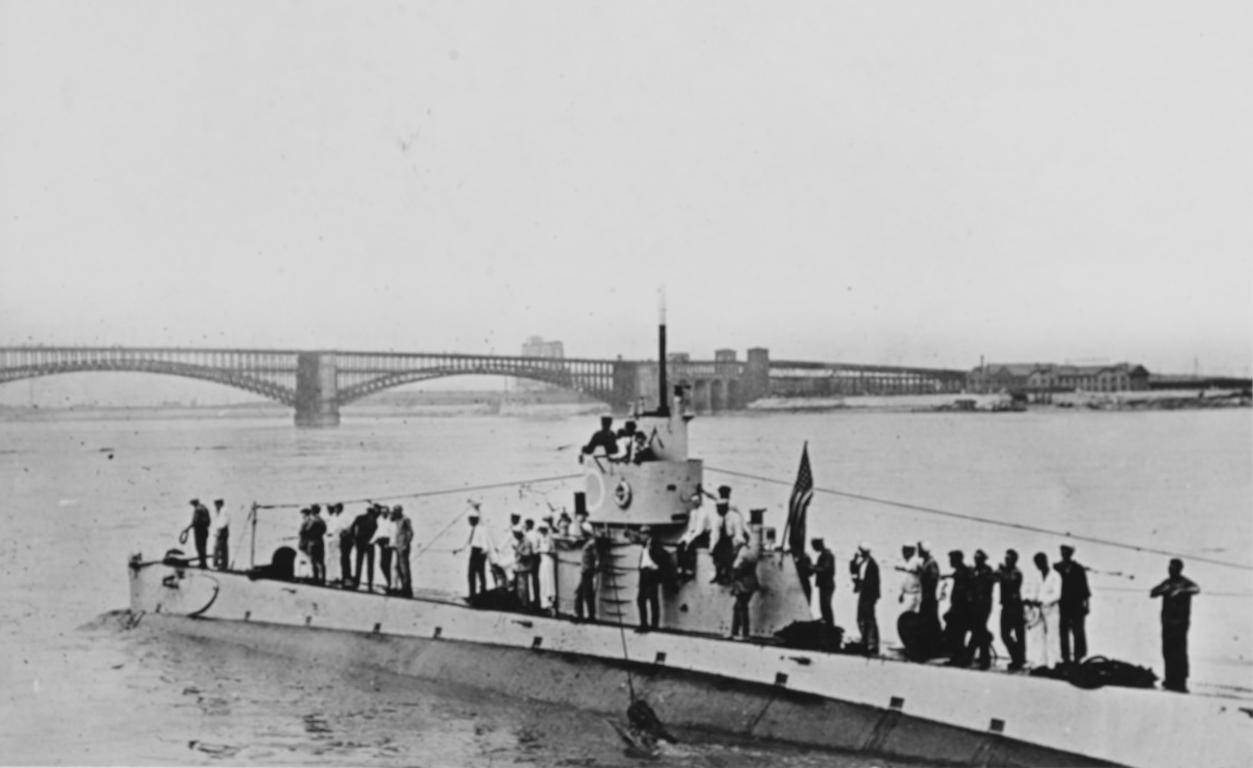

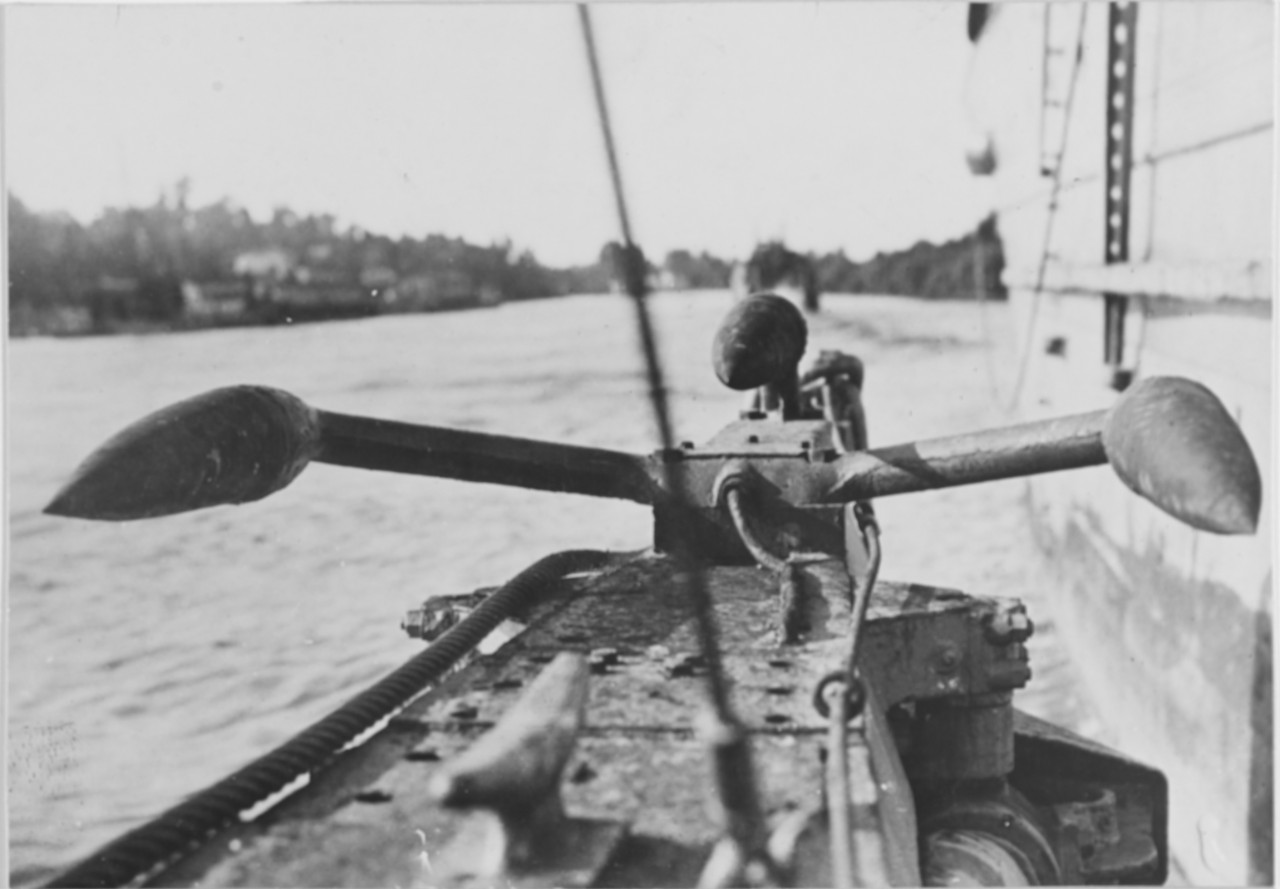
K-5 later returned to Key West where she collided with the tug John L. Lawrence (S. P. 838) on 12 September. Both were reported as uninjured, but K-5 docked at Key West for construction on 15 November. The boat departed Key West for Philadelphia on 12 June 1920, arriving on the 17th for overhaul. She then received orders on 21 June re-assigning the homeport of her division, Submarine Division Three, from Key West to Philadelphia. Four days later, on the 25th, that division was placed into an inactive status and on 7 July, all the submarines in the division were made available for all authorized yard work. While in this status on 17 July, K-5 was designated SS-36 as part of a Navy-wide administrative reorganization. The division then received orders on 20 July, assigning them to the First Naval District to be based at Squantum, Mass., upon the completion of their yard work at Philadelphia. That assignment was subsequently changed on 15 January 1921, when she and the other K-boats were assigned to Submarine Base, Hampton Roads. In furtherance of these orders, the submarines were also reassigned from Division Three to Division Five.
With her repairs completed, K-5 sailed to Hampton Roads, Va., on 5 March 1921. On 9 May 1921, she received orders assigning her to the Special Submarine Squadron, effective 15 May. During the following months, K-5 and the other submarines of the squadron conducted numerous experiments and maneuvers to improve the operational and tactical abilities of the submarine in the waters off New England and in the Chesapeake Bay. On 21 July, the submarine was forced to enter the Boston Navy Yard to undergo urgent repairs to her main motor. On 2 December, her assignment, as well as that of the other K-boats, to the Special Submarine Squadron was cancelled, and she reverted to her previous assignment in Division Five.
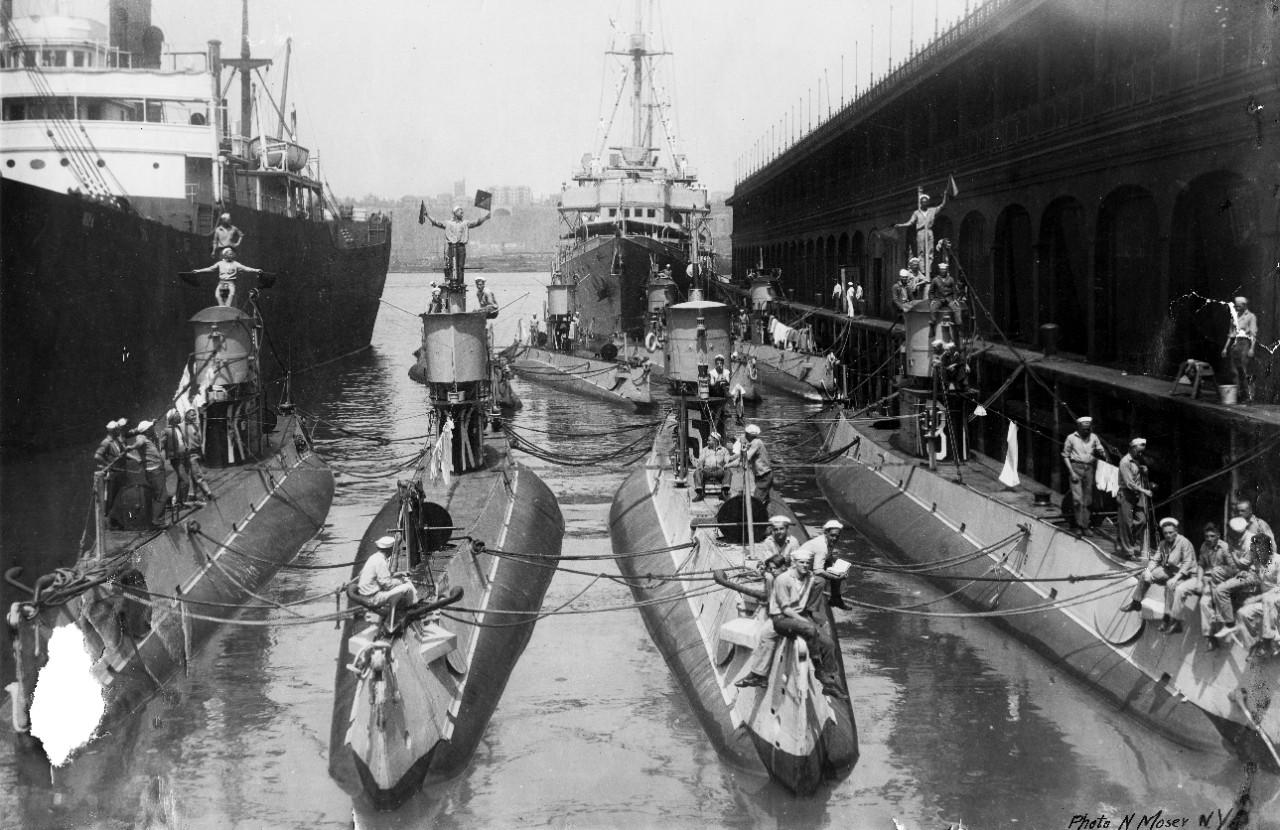
With orders dated 27 January 1922, K-5 and the other boats of Division Five reported to Commander, Submarine Base, New London. While underway on 18 March, K-5 crossed astern in too close a proximity to the Bartlett Reef (Conn.) Light Vessel and dragged across the latter’s moorings. Following diving trials off Cape Cod, K-5 arrived at Hampton Roads on 7 September 1922.
K-5 continued operations in the Chesapeake Bay, then decommissioned at Submarine Base, Hampton Roads on 20 February 1923. Taken in tow to Philadelphia on 13 November 1924, she was stricken from the Navy List on 18 December 1930 and was later sold for scrapping on 3 June 1931.
| Commanding Officers | Dates of Command |
| Lt. (j.g.) Holbrook Gibson | 22 August 1914–22 April 1915 |
| Lt. Ronan C. Grady | 22 April 1915–10 November 1916 |
| Lt. Lewis D. Causey | 10 November 1916–24 June 1917 |
| Lt. Joe R. Morrison | 24 June 1917–1 October 1917 |
| Lt. George W. Wolf | 1 October 1917–10 October 1917 |
| Lt. Cmdr. Ernest D. McWhorter | 10 October 1917–20 February 1918 |
| Lt. Thomas G. Berrien | 20 February 1918–1 November 1919 |
| Lt. (j.g.) John V. K. Richards Jr. | 1 November 1919–8 February 1921 |
| Lt. Charles W. Styer | 8 February 1921–18 October 1921 |
| Lt. (j.g.) John O. Huse | 18 October 1921–31 August 1922 |
| Lt. (j.g.) Howard W. Fitch | 31 August 1922–20 February 1923 |
Christopher B. Havern Sr.; Commanding Officers Table Researched and Compiled by Kathryn Sullivan
11 October 2018


